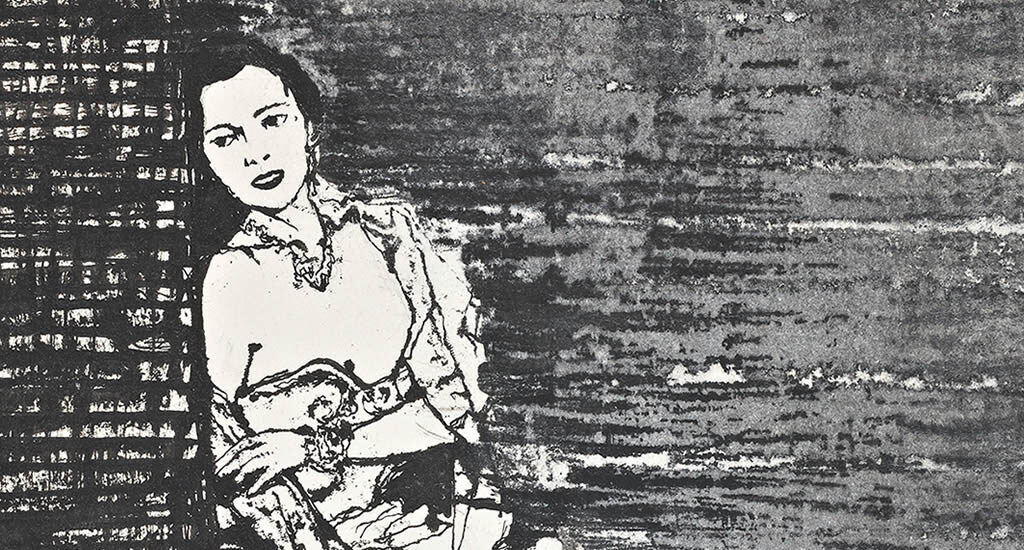
There were two leading roles that the auteur, at the start of his career, entrusted to the beautiful Milanese actress: the disturbing femme fatale in his debut feature Cronaca di un amore (Story of a Love Affair, 1950) and that of the mediocre starlet in the following La signora senza camelie (The Lady Without Camellias, 1953). Two certainly antithetical characters, but which confirm Antonioni’s interest in women’s inner lives.
Unlike Vitti, Lucia Bosè came to cinema without any real training. Noted by Luchino Visconti when still an adolescent working in a pastry shop in Milan, she won Miss Italy 1947 against rivals of the calibre of Gina Lollobrigida and Silvana Mangano. After an important part in Giuseppe De Santis’s Non c’è pace tra gli ulivi (No Peace Under the Olive Tree, 1950), Antonioni chose her to interpret the amoral but irresistible Paola in Cronaca di un amore. As a letter (b. 9B/2, fasc. 136 ) she wrote to the director reveals, the young actress offset her lack of training with unfailing confidence in her charm. Bosè’s natural good looks were perfectly suited to the ambitious elegance of the character she played, making her credible as a much more mature woman of a high social class. As later happened in Le amiche (The Girlfriends, 1955), in this movie haute couture styling was central to the definition of a femininity torn between desire and social rules. This conflict seems to allude to a drawing by Antonioni depicting on both sides Paola in the filmy evening gown of the finale, when the dream of love with the penniless Guido (Massimo Girotti) is shattered. In this sketch in Indian ink, the opulence of the dress contrasts sharply with her body’s attitude of dejected forlornness.
Inspired by the ascent to stardom of Gina Lollobrigida, La signora senza camelie presents a bitter fresco of the world of cinema. Clara Manni is the victim of an industry that launches and destroys untalented starlets with the same rapidity. The documents in the archive make it possible to measure the widely different reactions to the actress’s performance. While the poet Attilio Bertolucci felt that Bosè was hardly convincing as a naive sex symbol, the film critic Gian Luigi Rondi saw in her performance the “balked torment of the woman who struggles to emerge from the character”, even going so far as to compare her with “certain desperate Pirandellian figures” (Articolo Gian Luigi Rondi + Attilio Bertolucci: Album 3).
Back to focus